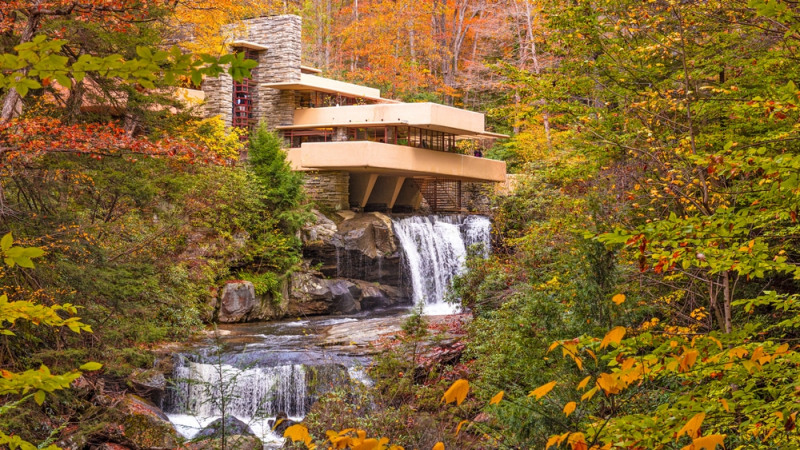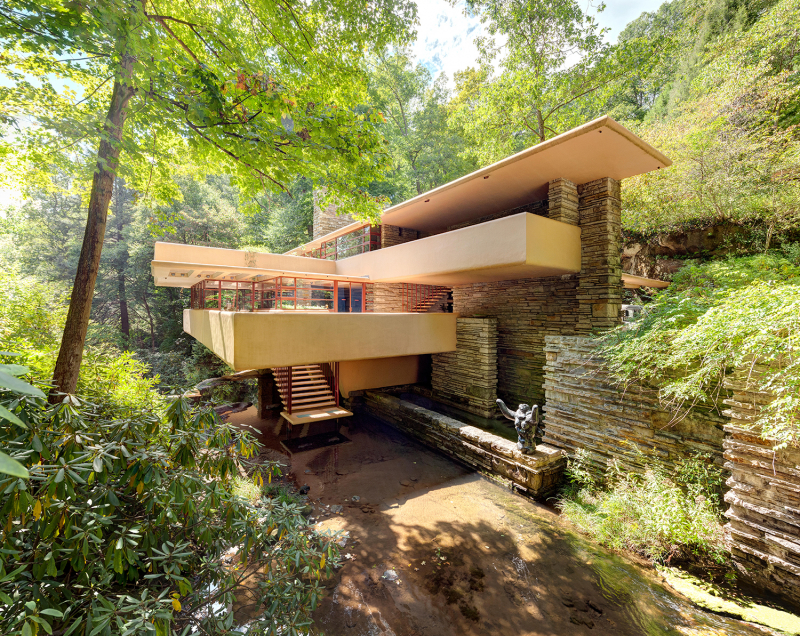Fallingwater
Fallingwater is a house created by Frank Lloyd Wright in the Laurel Highlands in southwest Pennsylvania in 1935, about 70 miles (110 kilometers) southeast of Pittsburgh. It is built partially over a waterfall on Bear Run in Stewart Township, Fayette County, Pennsylvania. Liliane and Edgar J. Kaufmann, owners of Pittsburgh's Kaufmann's Department Store, commissioned the house as a weekend hideaway.
According to Michael Brooks (the former editor of Designing Buildings Wiki), a stream flows at 1,298 feet above sea level in the 5,000-acre Bear Run Nature Reserve before abruptly breaking to plunge nearly 30 feet. Inspired by Japanese architecture that promotes harmony between man and nature, Wright constructed the house such that it appears to float over the waterfall. The home was constructed for Wright's patrons, the rich Kaufmann family, who were originally astonished by his plans because they had expected their house to be positioned to provide the finest view of the falls. Instead, Wright intended for the falls to become a part of their daily lives, their force sensed aurally rather than visually, with the sound of crashing water audible throughout the house.
Fallingwater was called "Wright's most beautiful job" by Time after its completion, and it is included in the Smithsonian's "Life List of 28 Places to See Before You Die." On May 11, 1976, the home was declared a National Historic Landmark. Fallingwater was designated the "best all-time work of American architecture" by members of the American Institute of Architects in 1991, and it was ranked 29th on the AIA's list of America's Favorite Architecture in 2007. In 2019, the house and seven other Wright structures were designated as a World Heritage Site under the title "The 20th-Century Architecture of Frank Lloyd Wright."
Address: 1491 Mill Run Rd, Mill Run, PA 15464, United States
Construction started: in April 1936
Architectural styles: Modern architecture, Organic architecture






















